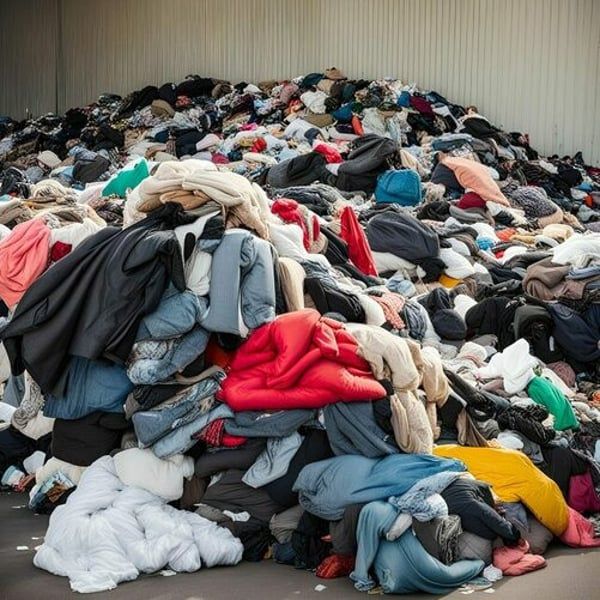The Ellen MacArthur Foundation has released its report 'Pushing the Boundaries of EPR Policy for Textiles' and the advocacy group makes the case why mandatory, fee-based Extended Producer Responsibility (EPR) is a must.
He said it is a “necessary part of the solution to building a circular economy for textiles and, to achieve this on a global scale, we need unprecedented collaboration between governments.”
The foundation said that around the world, “the vast majority of textiles (more than 80%) escape the system when discarded: they are incinerated, landfilled or leaked into the environment,” with textile waste being ” a direct consequence.” of our linear economic system.”
It is undeniable that the textile collection infrastructure is underdeveloped: the foundation claims that separate collection rates average 14% and peak at only 50%. And he added that even sorted used clothing creates a problem, as more than 80% of reusable clothing collected is exported after sorting, “creating a disproportionate waste management burden on importing countries.”
In fact, in 2021, the majority of exports were generated by just 16 countries. And the global trade in used clothing places a disproportionate waste management burden on importing countries, as well as having huge social consequences there.
Clearly, the foundation wants the industry to step up and take more responsibility, but also for governments to make this mandatory.
So what could that mean? The OECD defines EPR as an environmental policy approach in which producer responsibility for a product extends to the post-consumer stage of the product's life cycle. Under EPR legislation, companies that place products on the market become responsible for managing their products when consumers throw them away. In the case of textiles, that means that brands, retailers and online marketplaces have responsibility, which could be financial, organizational or both.
To fix the current “leaking system”, the foundation calls for separate textile collection infrastructure to be “drastically expanded and implemented in places where it currently does not exist.”
At the moment, “the economic aspects of selective collection and recirculation of textiles are not enough,” they tell us. Therefore, REP policies “must be pushed to go beyond traditional approaches in downstream measures, such as waste management and recycling, to address the challenge of textile waste.”
He believes that a comprehensive circular economy approach is the “only solution that can match the scale of this global problem. In this system, companies contribute to sustaining the infrastructure in proportion to what they place on the market. Financing is essential to cover the net cost associated with the management of all discarded textiles and not just those with a high market value.”
Greater circularity
Basically, the foundation highlights the need for the entire fashion system to become much more circular.
That means models like rental and resale are becoming the norm. It also means products and materials designed and manufactured to be taken apart so they can be reused, remade and recycled (like the idea behind the launch of Coach's Coachtopia line).
It is also important that the use of virgin resources is minimized and that products and their materials are free of hazardous substances so that their production and use do not discharge these substances into the environment.
The foundation said collection infrastructure must be built to scale, but also that when collecting separately, the industry must avoid simply washing its hands of the problem, as is currently the case.
With so much reusable clothing being collected through formal collection systems and currently exported after sorting, there is a huge responsibility focused on a few destination countries, many of them non-OECD, and the industry In these countries it is characterized by precarious employment. and small profit margins.
The group believes the industry needs to step up and make significant investment to ensure it becomes more circular, that it needs a collective approach and that governments need to play their part.
Valérie Boiten, Senior Policy Officer at the Ellen MacArthur Foundation, said: “A circular economy is the only solution that can match the scale of the global textile waste problem and REP policies are an important part of that, but it remains underutilized. .
“The EPR can support a circular economy across borders, contributing funds to the collection and management of discarded textiles in those countries where they ultimately end up.
“This report explores the next frontier of EPR policies and highlights the enormous potential that can be achieved by focusing on circular outcomes, such as repair and other circular business models, as well as circular product design.”
Copyright © 2024 FashionNetwork.com All rights reserved.












